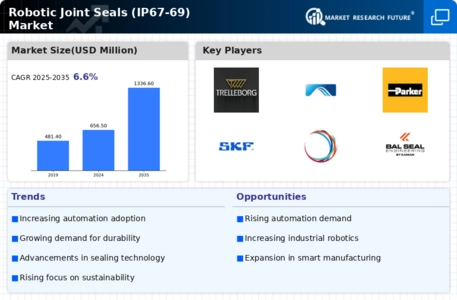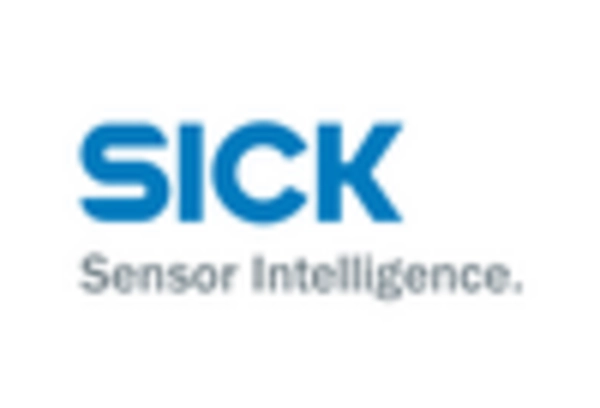Emphasis on Product Longevity
In the Robotic Joint Seals Market (IP67-69) Market, there is a pronounced emphasis on product longevity and performance. As industries increasingly rely on robotic systems, the need for durable sealing solutions has become critical. The market for robotic joint seals is projected to reach USD 1.5 billion by 2026, driven by the necessity for components that can endure extreme conditions. Seals that meet IP67-69 standards are particularly sought after, as they provide robust protection against water and dust ingress. This focus on durability not only enhances the lifespan of robotic systems but also reduces maintenance costs, making it a key driver in the market. Manufacturers are thus compelled to innovate and develop seals that offer superior resistance to wear and environmental factors.
Rising Automation in Manufacturing
The Robotic Joint Seals Market (IP67-69) Market is experiencing a surge in demand due to the increasing automation in manufacturing processes. As industries strive for efficiency and precision, the integration of robotics has become paramount. This trend is evidenced by a projected growth rate of approximately 10% annually in the robotics sector, which directly influences the need for reliable sealing solutions. Robotic joint seals are essential in ensuring that robotic components remain protected from dust and moisture, thereby enhancing operational longevity. The growing adoption of automated systems across various sectors, including automotive and electronics, further propels the demand for high-quality seals that can withstand harsh environments. Consequently, manufacturers are investing in advanced sealing technologies to meet these evolving requirements.
Regulatory Standards and Compliance
In the Robotic Joint Seals Market (IP67-69) Market, regulatory standards and compliance play a crucial role in shaping market dynamics. As industries become more aware of the importance of safety and reliability, adherence to international standards such as IP67 and IP69 is increasingly emphasized. These standards ensure that sealing solutions provide adequate protection against environmental factors, which is essential for maintaining operational efficiency. Companies that comply with these regulations are likely to gain a competitive edge, as customers prioritize quality and reliability. The push for compliance is driving manufacturers to invest in research and development to create seals that not only meet but exceed these standards. This focus on regulatory adherence is expected to continue influencing market trends in the coming years.
Growing Demand in Robotics Applications
The Robotic Joint Seals Market (IP67-69) Market is witnessing a growing demand driven by the expansion of robotics applications across various sectors. Industries such as healthcare, logistics, and manufacturing are increasingly adopting robotic systems for tasks ranging from assembly to precision surgery. This diversification in applications necessitates the use of high-performance sealing solutions that can withstand varying operational conditions. The market for robotic seals is expected to grow at a compound annual growth rate of 8% over the next five years, reflecting the increasing reliance on robotics. As these applications evolve, the need for seals that ensure the integrity and functionality of robotic joints becomes paramount, thereby propelling market growth.
Technological Advancements in Sealing Solutions
The Robotic Joint Seals Market (IP67-69) Market is significantly influenced by technological advancements in sealing solutions. Innovations in materials and design are enabling the production of seals that offer enhanced performance and reliability. For instance, the introduction of advanced elastomers and composite materials has improved the resistance of seals to extreme temperatures and chemicals. This evolution is crucial as industries demand seals that can operate effectively in diverse environments. Furthermore, the integration of smart technologies, such as sensors within seals, is emerging as a trend that could revolutionize the market. These smart seals can provide real-time feedback on their condition, thereby enhancing maintenance strategies and operational efficiency. As a result, the market is likely to witness a shift towards more intelligent sealing solutions.


















Leave a Comment